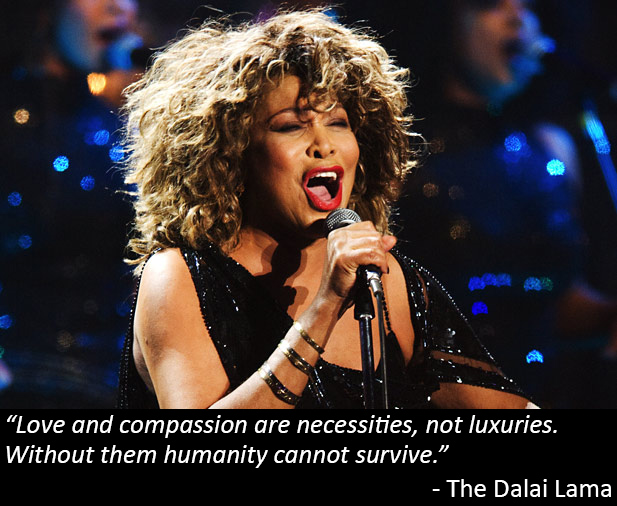Listening and questioning, which we have been examining for the last five weeks, are actions we can take which are tied to empathy and compassion. Both empathy and compassion seem appropriate for the season, so we wanted to delve in again with our post from November 11, 2015.
Tina Turner’s 1984 Grammy Song of the Year asks “What’s love got to do with it?” It turns out that compassion—an element of love—has everything to do with how we talk with one another. Is it a “second-hand” emotion as the song suggests?
Compassion might sound like a surprising, even unnecessary, element in meetings. However, to solve complex issues, we need to converse and build relationships with people who have different life experiences and points of view then we do. To find common ground and move forward together we need, at the very least, to understand people’s perspectives or have what Daniel Goleman calls “cognitive empathy.”
Since compassion starts with empathy, we need two additional kinds: “empathic concern,” or the ability to sense what another person needs; and “emotional empathy,” the ability to feel what someone else feels.
These three types of empathy are a prelude to compassionate actions—listening, asking questions of genuine curiosity or concern, wishing for the well being of others and doing something helpful. This does not mean you need to agree with those for whom you feel compassion, but it does increase the likelihood that you will able to disagree in ways that do not evoke people’s self-protective mechanisms and all the destructive behavior that accompanies them: fighting, fleeing, or freezing.
Although it might feel like a stretch to experience empathy, even compassion for our co-workers and neighbors, it is important to remember that our brains are wired for both. They were a key part of how our ancestors survived in the past and how we will survive in the near future. It is only fear and self-protective habits—exacerbated by our individualistic culture and the partisan, fear-mongering media—that get in the way of our extending kindness to one another.
It can be challenging to be kind. When people are in distress, they often behave in ways that trigger us, making it difficult to empathize with them, let alone be compassionate. When people vociferously disagree with us, adamantly espouse opinions that set our hair on fire, interrupt or attack us, or simply check out, it is really hard to remember that they are being driven by the more primitive parts of the brain and probably acting unconsciously to protect themselves.
What are our options? We could go into a reactive mode ourselves and interrupt them, attack back (“What is wrong with you?”), or check out (“Whatever”). This might feel self-righteously good in the moment but won’t move the cause forward. Another option is to tip toe towards compassion by using all our listening skills to try to understand their perspective. And, as we listen to what they are saying we can also listen for or ask about what they are likely not saying: what they really need. It could be as simple as being heard or as complex as protecting their position on the issue at hand. If you listen well, you might even be able to feel how they are feeling.
Any step you take to empathize with others will go a long way to calm conversational waters, build a sense of safety, and open a door to talking more effectively together.
“Who needs a heart when a heart can be broken?” All of us. If we don’t have a heart we cannot work together effectively to solve issues we want to solve or get done what we want to get done. Compassion’s got a lot to do with it.

